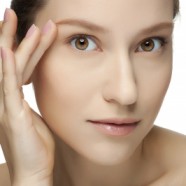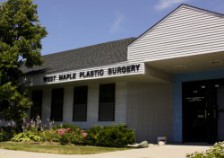Laser Skin Resurfacing 101: Everything You Need To Know
Laser resurfacing is a cosmetic surgical procedure that involves the application of lasers to create a smoother, more even skin surface and complexion. It’s often combined with other procedures, such as liposuction or browlifts, to tighten the skin and promote a higher level of aesthetics. Whether you’re looking to treat problematic areas on your skin, or if you simply want to create a more vibrant and youthful appearance, you can’t go wrong with laser resurfacing. Conditions That Skin Resurfacing Treats There are a wide variety of skin conditions that can be successfully treated using laser resurfacing, such as wrinkles, sun spots, sun damage, acne “icepick” scars, post-surgery scars, stretch marks, keratosis, telangiectasias, and more. If a client is experiencing any non-threatening cosmetic skin condition, it can usually be treated through laser resurfacing. Of course, you’ll want to talk with your cosmetic surgeon to determine whether or not you are a viable candidate for this procedure. How Skin Resurfacing Works Laser resurfacing lives up to its namesake by using advanced lasers to smooth and resurface the skin. According to some reports, the procedure was first performed using a CO2 laser, but there are now several different options available for cosmetic surgeons and their patients. This includes Er:Yag, Er: Glass, Nd:Yag and Diode, each of which has its own unique purpose and characteristics. Laser skin resurfacing is typically performed with either a Er:YAG laser or a CO2 laser. The Er:YAG laser operates at a wavelength of 2940 nm and is frequently used to treat scars and photoaging, whereas the CO2 laser operates at a wavelength of 10,600 nm and is commonly used to treat rhytides and photodamage. Er: Glass operates at a lower wavelength of just 1540 nm and is used to trat scaring as well as a general skin rejuvenation; Nd:Yag operates at either 1064 or 1320 nm and is used to treat photodamage; and Diode operates at 1450 nm and is used primarily for facial rejuvenation. There are generally two types of laser skin resurfacing techniques: ablative and non-ablative. Ablative is a more invasive procedure that vaporizers the top layer of skin. The recovery time for such procedures is a bit longer, but ablative resurfacing is able to treat problematic areas of the skin. Non-ablative, on the other hand, keeps the skin intact throughout the procedure. Of course, there are other skin resurfacing techniques available as well, which do not rely on the use of lasers. This includes chemical rejuvenation using chemical peels, thermal rejuvenation with a radio frequency device, photo rejuvenation with lamps, mechanical rejuvenation with dermabrasion, and injections of botox, fillers and/or...
Read More5 Skin Care Tips To Put Off A Skin Resurfacing As Long As Possible
Getting healthy skin can seem like an endless quest, particularly for those who’ve tried every product on the market. If you’ve been let down by bottles with big price tags on them, and you’re not quite ready for a full skin resurfacing yet then the answers you’re looking for might be right in front of you. Instead of adding more chemicals to the biggest organ in your body, why not take care of it using natural solutions? Solutions like: 1. Dry Brush Exfoliation The skin is the biggest organ in the body, and it gets clogged up with everything from dirt to dead skin. A dry brush exfoliation is when you run a gentle bristle brush over your skin before you get in the shower. This loosens up the things you don’t want in your skin so that when you wash they come out more easily. 2. Sweat It Out Sweating might feel gross, but it’s actually good for your skin. A regular sweat (typically from enthusiastic exercise) is a good way to cleanse your skin and to get rid of anything that might be clogging it up or causing problems. This will help skin stay looking younger, longer. 3. Eat More Fiber While it might be associated with seniors who need to “keep regular” bad skin is often a symptom of poor digestion. In order to make sure that the gut can do its job properly it’s recommended by the National Academy of Sciences that women age 19 to 50 take in 25 grams of fiber a day, and that women over 50 take in 21 grams of fiber. Men aged 19 to 50 should take in 38 grams of fiber, and men over 50 should take in at least 31 grams per day. 4. Cut Out Your Sweets We rarely stop and think about just how much extra sugar is in modern day food. While greasy food is definitely bad for your skin excess sugar isn’t doing you any favors either. If you can’t seem to get your skin to behave then try drinking water instead of soda or fruit juice. If you need some sugar in your day then try to keep it natural by eating a piece of fruit. The reduced intake and healthier snacks will have a big impact on your skin in relatively short order. 5. Eat More Good Fats Whether you have dry skin or not, eating the “good” fats can really help you maintain healthy skin. Cold water fish like salmon or sardines are packed with positive fats, but if you don’t like fish then you can always take fish oil supplements. Flaxseed and walnut oil make great salad dressings, but you can also get some good fats just from eating the right nuts. What you put into your body affects what your skin looks like a lot more often than you might think. For more information on getting smooth, tight skin simply contact...
Read MoreTwo Common Types of Skin Resurfacing
Laser skin resurfacing, also known as laser skin rejuvenation, removes layers of skin that have irregularities caused by aging, heredity and sun damage. For anyone thinking about undergoing a skin resurfacing procedure, they should know there are two common types of laser skin rejuvenation therapies to choose from. CO2: CO2 skin resurfacing minimizes the appearance of scars and wrinkles. It’s also used to reduce the size of pores on the nose and undo damage caused by the sun. According to Cutaneous Medicine and Surgery, CO2 has dominated as the most common form of skin resurfacing technique because of its efficiency at improving photo-damaged skin. Erbium: Erbium is designed to remove deep lines and wrinkles on the chest, face and hands. This type of skin resurfacing is recommended for individuals with deeper skin tones. Appropriate candidates for this procedure are individuals who are non-smokers in general good health. For those considering skin resurfacing, it is important to know that skin resurfacing treatments may not be the best option if an individual has a severe case of acne or very dark skin. If a person decides that skin resurfacing is for them they should schedule an initial consultation with a board certified plastic surgeon. During the consultation, the doctor will go over the patient’s medical history, discuss the type of skin resurfacing procedure the individual wants, take photographs and go over the potential risks of the procedure. To learn more about skin resurfacing and to decide which technique may be right for you, contact...
Read More


